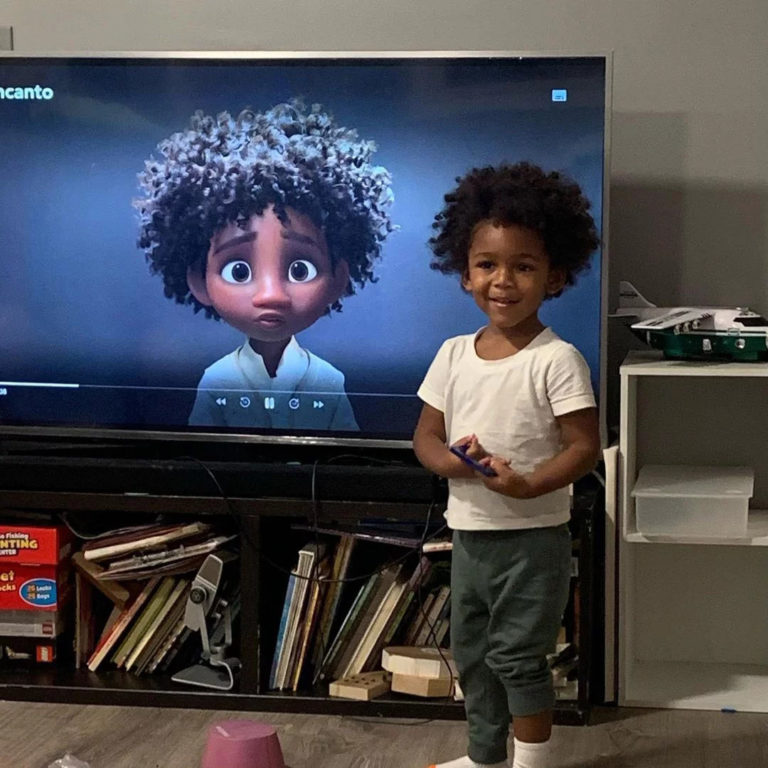The Role of Accessibility and Inclusion in Instructional Design
By Josh Yavelberg, PhD
Lately I have encountered a lot of training artifacts that simply are not accessible, and while we are always happy to help with that at Flying Cloud Solutions, I felt that it is necessary to outline a few thoughts and share some resources in terms of not only compliance, but the importance of universal design practices in what we do. At Flying Cloud Solutions, we design innovation. This means that we apply design thinking principles, incorporating a variety of lenses, one of which happens to be a learner-centered approach with a universal design lens.
What is Universal Design?
While Flying Cloud Solutions resides the United States, we largely focus on accessible design as per the Americans with Disabilities Act (ADA) Standards. However, there are other similar acts that have been produced to promote accessible and inclusive design internationally. In Ireland, the 2005 Disability Act defined Universal design as:
Universal Design is the design and composition of an environment so that it can be accessed, understood and used to the greatest extent possible by all people, regardless of their age, size or disability. This includes public places in the built environment such as buildings, streets or spaces that the public have access to; products and services provided in those places; and systems that are available including information and communications technology (ICT). (Disability Act, 2005)
Of note here is the focus on everybody. There is of course the caveat of “to the greatest extent possible” which is similar to the ADA’s standard of “reasonable accommodations.
When designing experiences, it is our job to first identify the target audiences for those experiences and, at the very least, meet minimum accessibility requirements provided under law. And yes, ADA in the United States is the law and not designing to those minimum standards leaves your work open to potential lawsuits. For a real-time feed of recent court decisions, you just need to visit ADA.gov and they are prominently displayed as the first tile on their website.
Designer or Decorator?
In the applied arts world, there is a stark distinction between an “Interior Designer” and an “Interior Decorator.” Simply, anyone off the street with a fair eye for visual balance can be a decorator, but that role is often limited to choosing paint colors and furnishing. A designer requires formal understanding of laws, regulations, architectural standards, design theories, to name a few in order to design experiences that for the viewer may simply feel like a comfortable space, but underlying that space are many layers of choices.
The instructional design world has a similar issue to that of interior design. The profession is relatively young and, while standards exist, many in the profession may progress in pure blissful ignorance as to what an “alt tag” is or the underlying architecture of SCORM versus xAPI. Many will still rely on the 1950’s Bloom’s taxonomy without care to understand the many other cognitive learning frameworks that now exist and are rapidly evolving with advances in brain science. Essentially, the instructional design profession has a large contingent of instructional decorators who can whip up a pretty template and perhaps engage other off-the-shelf techniques to deliver content.
Instructional design needs to be better as an industry and actively hold itself accountable to a mission of delivering solid training experiences that are truly learner centered. This means acknowledging the diversity of our audience and designing inclusive experiences that at a base level meet accessibility standards, and at a visionary level, adapt to engage the individual needs and motivations of every learner.
Universal Design Essentials
Universal design is all about inclusivity. The first order of business is to know the target audience and get to know their challenges, develop personas, and empathize with them. Developing persona sheets to refer to and assure that designs meet their needs often requires innovation and an eye toward customized and adaptable experiences. Universal design is an accessibility plus approach in that it considers how in developing for those of differing ability, designs often produce practical and engaging results for all.
Take for instance closed captioning. The innovation is designed for those who may be deaf or hard-of hearing, but if you ever had to watch a video at work or follow the news while at a restaurant bar, those captions are being used by everyone, not just those of differing abilities. There are many innovations that have had similar adoptions: curb cuts, text resizing, text translation, zoom features, among others that we naturally access daily without giving much thought.
In the ability to customize a user experience, such as adjusting colors, zoom features, contrast, or other customization options within user interfaces or games, the general user actually does take advantage of these options. For instance, in the game Uncharted 4, 9.5 million players used the accessibility options to customize their gaming experience. Similarly, 95% of Far Cry: New Dawn players were happy to play through the game without turning off subtitles that started by default (Keeling 2021). Developers on the other hand incorporate these features to check the box and hide them within submenus.
But for those of differing abilities, if you don’t add text resizing, you don’t consider the color contrast, methods of slowing down or removing timers, not translating content into various languages, you are placing real barriers to these audiences, and often the solution may be as simple as a checkbox, form field, or slight adjustment in the design and development process to meet their needs.
General Accessibility
Let’s start with general access. People of all abilities encounter daily systemic challenges to access. Things such as transportation, wealth, access to reliable Internet, time, age, family care, among many other variables affect the level of access of individuals to products that we design. How will your audience gain access to your designed product? There are a lot of variables to consider here depending on the medium. Much of eLearning requires thought to access to computers, what web browser one uses, the websites that are hosting the content, the credentialing and gatekeeping processes, registration, etc. As the learning and design (L&D) industry investigates augmented reality (AR), virtual reality (VR), and other technologies, the level of access diminishes greatly without designed support or alternative methods of accessing the content and/or delivering towards intended outcomes.
Physical Accessiblity
Many guidelines set forth by ADA and WCAG focus on providing accommodations for people of differing physical abilities. Physical abilities include but are not limited to visual or auditory impairment, photosensitive disorders, lack of mobility, or lacking the ability to use a mouse or other human interface device. In the digital space, developing for physical accessibility comes with clear checklists of minimal standards for incorporating alternative experiences that will work in combination with the many assistive devices that these individuals may use.
Often the L&D space neglects simple practices such as incorporating clear alt text for images that are being used to convey messages, or designing with proper color contrast between text and its background for legibility. These are often easy fixes that most development programs (Microsoft, Adobe, etc) have tackled within their accessibility check features. But running through these checks provides a baseline standard and the industry neglects digging deeper into other accessibility features such as audio descriptions or video transcripts to accompany videos beyond closed captioning (Examples: Audio Description: “The Lion King;” Video Transcript: WCAG Suggestion).
There is continued debate currently in L&D about new technologies and training. How do we innovate and keep pace with the expectations of our audience that experiences high-budget entertainment on our L&D budgets? Can we jump into virtual reality technology and still deliver an inclusive product? If the video game industry is any indicator, then the answer is yes, but often with time and a budget. There are interesting investigations into these spaces playing out in L&D in spaces such as military, health care, and higher education settings.
Cognitive Accessibility
A subset of the WCAG and ADA standards for design that deeply impacts L&D experiences is designing for cognitive accessibility. Developing clear structures for websites such as headings, title pages, etc. also translate to other designed experiences and actually help to reinforce concepts in training such as designing clear scaffolding of enabling and terminal learning objectives. Consider the basic tips for writing by WCAG:
Provide Informative, unique title pages
Use headings to convey meaning and structure
Make link text meaningful
Write meaningful text alternatives for images
Create transcripts and captions for multimedia
Provide clear instructions
Keep content clear and concise
Other web design standards include assuring that users are helped to avoid and correct mistakes, there are alternatives to timers to allow more time-on-task as needed, and simply that the content and navigation of the experience appears and operates in predictable ways. Good L&D must also consider how different audiences may engage with a product and assure that the product correctly guides and supports learning pathways appropriately.
Inclusivity
Accessibility is also about inclusivity. It is about creating a sense of belonging or acceptance of the audience with the experience and avoiding othering or providing an experience that marginalizes individuals. Some of the general standards such as the ability to remove timers may help people of lower cognition or literacy, but it may also help those not fluent in the language of the product to work through translation or for people with low bandwidth and connection issues, or even new and infrequent users. But real people have many challenges and cultural systems have a great influence on how an individual interacts with and internalizes a designed experience.
Consider language, what language or languages is the experience delivered in? We live now in a highly internationalized world. Any given day, we might be speaking with people across the globe, all with different languages. If you have ever traveled to a foreign country, I am always impressed at how accommodating most are for English speaking individuals, but when placed into a situation where you don’t speak the language, the experience can be quite difficult (For a heartfelt example of the impact of language check out Ryan Kelly’s Disney Cast Member experience). Language is a large part of culture not only internationally, but also is an important barrier to belonging within an organization, industry, or social setting. If you don’t “talk-the-talk,” know the acronyms or the right terms for navigating conversations, you are indeed othered or not included within the spheres of influence that will allow you to fully engage and participate. How do we as designers scaffold experiences to overcome such barriers?
Consider culture, how does the experience accurately reflect different cultural experiences? There has been a lot of work lately to address cultural misconceptions and misrepresentations in the media. Designs need to avoid biases and do the homework to assure that content accurately reflects the history of cultures that it intends to represent. Avoid stereotypes.
Consider body image, are representations of people all “thin and beautiful,” held to an athletic ideal standard or are “real” people being reflected? This is a difficult task and one that the entertainment industry has begun to tackle. I have a friend and former student Penelope Talleur for instance making great leaps (literally) breaking into the world of movie stunts as a plus size individual and breaking down misconceptions while also opening up the industry to broader possibilities not only in terms of diversity of actors, but also in terms of a diversity of the audience that their products look to connect with.
Consider the representation of diversity of skin tones and boy types in the characters of Disney’s Encanto:


Body image, culture, language, and other inclusive ideas are important as representation matters. People engage when they feel they are reflected in the experience, that they belong.
But How?!
There are so many variables that affect the experience of a product. How do you account for all of these design lenses? Thankfully, there is a base standard for many of these physical accessibility requirements. Those requirements must be reflected within any design solution in order to meet these baseline needs. But universal design is a process. Design thinking places the audience and their experience at the front of the process so that the final solution meets the specific and intended needs to deliver on outcomes.
The solution here is simple: INCLUDE YOUR AUDIENCE IN THE PROCESS. Be sure to engage with the audience, interview them, discover their unique needs and give them a seat at the table in the process. If they are going to engage with the experience, they want to be reflected within that experience. Develop audience personas that actually come through research and dialogue with real people. The addition of their voices to the conceptual phases will help to get out of your head, avoid “self hugging,” and deliver a truly accessible product.
The other method to consider within the design process is providing methods for the end user to personally customize and tailor their experience should they choose. We have almost come to expect a level of personalization and the ability to customize pretty much everything we touch. For those facing a variety of barriers toward accessibility, this ability to customize the experience to meet their needs is crucial. The power of choice also provides agency for the user and a sense of involvement in the product that does not come when the choice is not provided. They will be a step closer to seeing themselves in the product and be motivated to continue to use the product or service as a result.
If you would like to know more about how Flying Cloud Solutions can help you with your accessibility journey, please feel free to set up a discovery call.